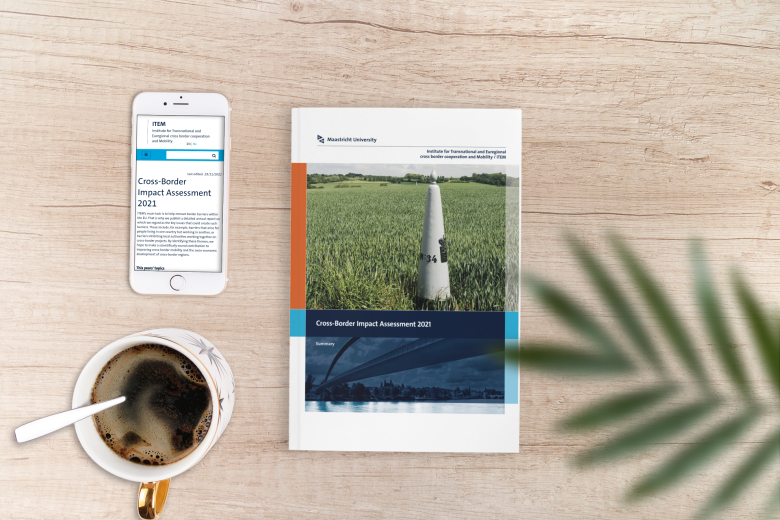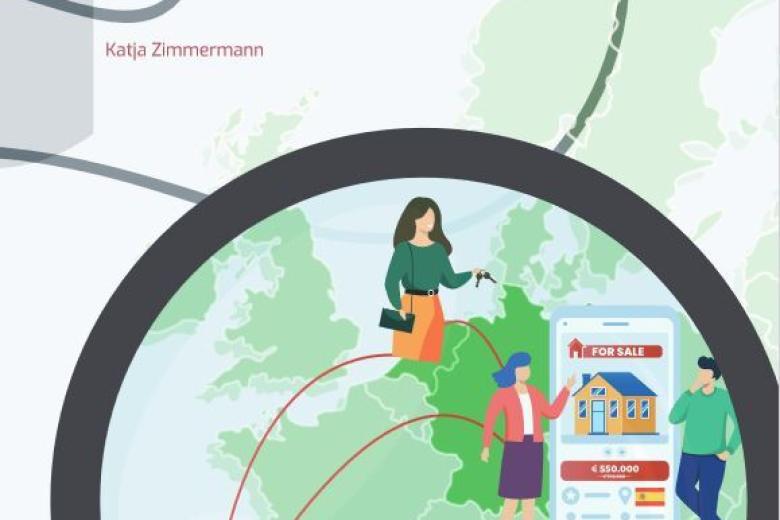The ongoing difficulty of drawing comparisons: a study on the definitions and success indicators of the transnational EURES cooperation
New ITEM study commissioned by EURES and the Euregio Meuse-Rhine on the definitions and processes of transnational public employment services.
Citizens of the European Union are entitled to look for employment in another member state, subject to the same local legislation applied to the workers of that state. This right is supplemented by a sort of entitlement to 'job placement' in other member states. However, national public employment services must cooperate if these services are to be offered in a transnational context. Since 2016, this approach has been explicitly prescribed by the new EURES-directive (EU) 2016/589. The directive outlines a European network of public employment services that 'afford workers and employees access to mobility-promoting services.' After many years of EURES cooperation, the focus now is on what EURES is actually accomplishing and what it might accomplish in the future.
Cooperation in terms of job-placement services in the Meuse-Rhine Euregio dates back to the 1990s, when the foundations of a EURES network were being laid. Since 2015, after a series of individual reform measures, the EU Employment and Social Innovation (EaSI) programme has been providing funding as part of its annual plans.
The various definitions and processes have been the subject of debate for many years within the EURES partnership. This debate has been fuelled by differing national priorities, the nature of the tasks and means of public employment services, and the role EURES plays in each national context.
The new EURES directive now provides definitions for a number of terms, including 'worker,' 'employment seeker,' 'public employment service,' 'border worker,' and 'job vacancy'. So far, however, these definitions have not simplified or improved how EURES activities in the Meuse-Rhine Euregio (and in the expanded network) are documented and evaluated. This is because the definitions play a very minor role in the different approaches and processes within the EURES partner organisations.
The bottom line is that each partner's public employment services have different legal duties and work with different instruments, internal definitions, and monitoring processes. Although this applies primarily to the regular, non-EURES services, it equally affects EURES activities that are linked to these services. This situation makes it difficult to establish a shared method of reporting EURES activities. The current method is based on the monthly reports by individual EURES consultants, but these reports are poorly coordinated given that they are aligned nationally and follow national regulations.
With this in mind, it is of particular concern that the differences in approaches and definitions (as highlighted by a comparison of the five partner organisations in the Meuse-Rhine Euregio) are the cause of inconclusive data on the current counts of successful cross-border job placements. In this case, no numbers would be better than unsubstantiated numbers that could lead to false conclusions about the performance of the national EURES organisation. In addition, the study has demonstrated the continued importance of making substantial improvements to how local public employment services report job vacancies to the European Commission's EURES portal. Currently, the available numbers are ill-suited to draw conclusions on the actual labour markets and are more indicative of the various reporting approaches.
The way in which individual consultants are free to decide how they report services provided by EURES is being brought into question. Those practically involved in EURES activities rightfully see these efforts as 'teamwork' (including in coordination with regular services), referring to both national and international teams. This is in line with the philosophy of the EURES partnership. One substantial recommendation of the study is to depart from documenting the activities of individual EURES consultants that aim to evaluate EURES services and to instead discuss options on how the joint performance of EURES teams, and especially the cross-border teams, can be evaluated in the future. The recent improvements in cross-border teams along the border between Germany and the Netherlands, such as in the South Limburg/Aachen region, could provide useful models to develop shared instruments that can be used to evaluate teams.
Grenzüberschreitende Arbeitsvermittlung im regionalen und nationalen Kontext
Also read
-
ITEM Cross-Border Impact Assessment 2021 published
Due to the Corona crisis, also many cross-border workers are forced to work in their home country. They have been asked not to cross the border to come to their office situated in the neighbouring country. At the moment, this is only possible because the Dutch, Belgian and German governments have...
-
Success factors for cross-border real estate transactions: information and patience
Buying a house abroad, with the complex procedures of rules and formalities that apply in the world of real estate transactions, one might wonder: what obstacles might I encounter? In her dissertation, Katja Zimmermann examined the operation and obstacles of various land registration systems. Her...
-
ITEM focal point taken up: addition to Dutch qualification policy for German social insurance schemes
The Dutch Ministry of Finance has updated the guideline on the tax qualification policy of foreign social security schemes. According to expertise centre ITEM, the addition concerning certain German social insurances is a positive development, which is in line with their vision and commitment in...